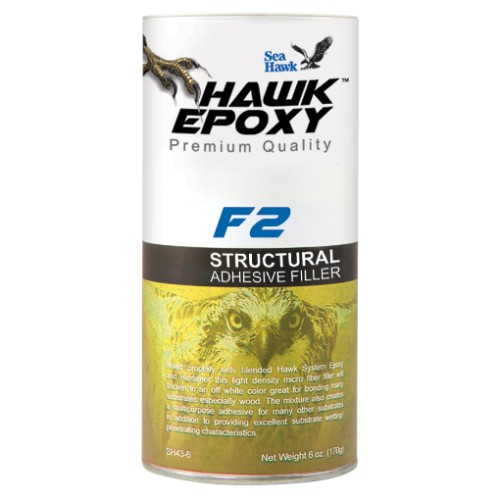
Hawk Epoxy Structural Adhesive Filler, F2, 1.7oz
-
Boat Bottom Paint
- Top Performing Bottom Paint
- Self-Polishing-Ablative Bottom Paint
- Hard Bottom Paint
- Hybrid Bottom Paint
- Water Based Bottom Paint
- Aluminum Safe Bottom Paint
- Bottom Paint Primers
- Specialty Marine Coatings
- Outdrive Paint
- Sea Hawk Paints
- Blue Water Bottom Paints
- Interlux Bottom Paint
- Pettit Bottom Paint
- Bottom Paint Remover
- Aquagard Bottom Paints
- Cleaners-Reducers-Solvents
- Boat Paint
- Boat Zincs
- New Items and Specials
- Boat Bottom Paint3
- Fiberglass and Gel Coat Repair
-
Topside Boat Paint
- Above or Below the Waterline
- Aluminum Boat Paint
-
Awlgrip Marine Paint
- Awlgrip Polyester Urethane Topcoat
- Awlcraft 2000 Acrylic Urethane Topcoat
- Awlgrip Awlcraft® SE Topcoat
- Awlgrip HDT
- Awlcraft 3000
- Awlgrip Converters
- Awlgrip Reducers and Activators
- Awlgrip Primers/Sealers
- Awlgrip Fairing/Surfacing
- Awlgrip Awl-Prep Wipe Down Solvents
- Awlgrip Corrosion Inhibiting Surface Treatments
- Awlgrip Brightwork, Varnish, Interior Wood
- Awlgrip Auxiliary Products
- Awlgrip Maintenance Products
- Camouflage Boat Paint
- Blue Water Topside Paints
- Duralux Marine Paints
- Marine Enamels
- Interlux Topside Paint
- Pettit Easypoxy
- Adhesives and Sealants
- Teak Oil and Wood Restoration
- Boat Paint Supplies
- Resins
- Cleaners and Polish
- Manufacturers
- Propeller and Running Gear Coatings
Your shopping cart is empty!
Product Description
- Excellent for bonding with fillets and gap filling
- Compare to West System 406 Colloidal Silica Filler

HAWK EPOXY FILLER DIRECTIONS FOR USE
1. Mix HAWK EPOXY resin and catalyst thoroughly as stated in the HAWK EPOXY R1 RESIN instructions.
2. Mix the Hawk Epoxy FILLER thoroughly. Then blend in small amounts of FILLER to the mixed resin and catalyst until the desired thickness is achieved.
Depending on use, mixing in more or less of the filler material will allow multiple uses with the same filler. For example:
• For laminating flat panels or bonding large surfaces, filler should be mixed to a pourable or injectable consistency.
• For general bonding, filleting or bonding hardware, mix material to a slightly to moderately thick consistency.
• If you desire a zero-sag effect, mix to a very thick consistency. This can act as a filler for uneven surfaces without worry of sag.
• To ensure maximum adhesion and strength, use only enough filler to avoid sagging or running. When using a resin/ catalyst/filler mixture for bonding, a small amount of mixture should squeeze out from between the two items that are being bonded to each other when they are pushed together. Increasing the filler to resin/catalyst ratio will deduct strength and increase sandability.
NOTE: Please refer to the FILLER SELECTION CHART Below for specific uses applicable to each filler.






